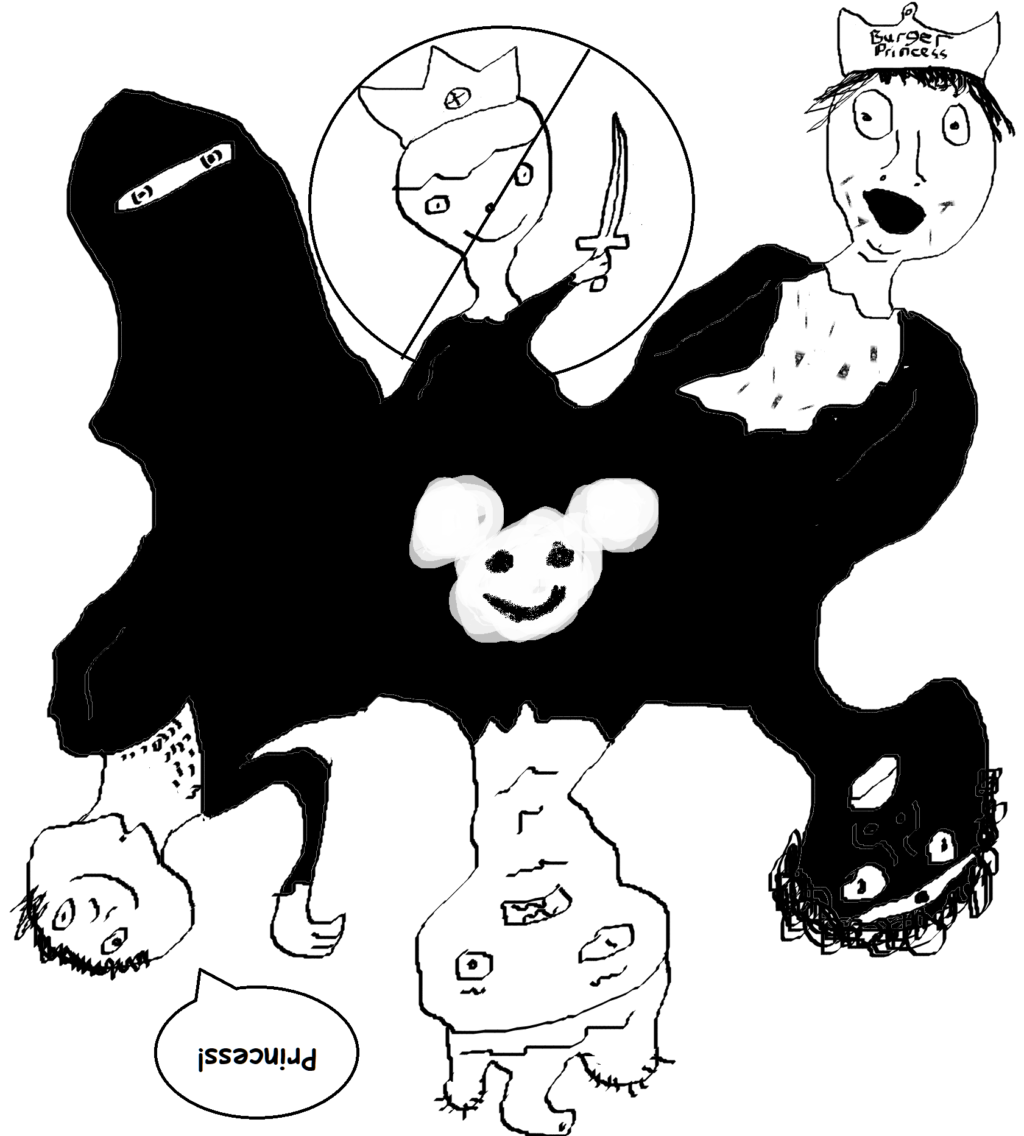
Satire
 Satire Requires a Clarity of Purpose and Target Lest It be Mistaken for and Contribute to That Which it Intends to Criticize
Satire Requires a Clarity of Purpose and Target Lest It be Mistaken for and Contribute to That Which it Intends to Criticize
The first gay Disney Prinncess was named Dominique and was featured in an adaptation of Joan of Arc. The ending was obviously changed so that instead of being burned alive, the extremely femme Joan rode off to a cottage in the French countryside with the even more femme Emma to live as roommates. Joan was to be marketed as a Princess as well, therefore allowing for a twofer, however uproar from feminist groups had her recategorized as a heroine thus leaving Dominique as the sole Princess. The only sign of their affection was a single kiss on the cheek. Conservative groups found the imagery of two women riding a horse intensely erotic and inappropriate, which led to the home video release cutting out the horse. Lesbians were angry at the lack of affection compared to heterosexual pairings but as a notoriously shrill and sexually dysfunctional subset of the weaker sex their concerns were ignored.
The first plus-size Disney Princess was named Ethel. She starred in an original story set in the American South during the Great Depression, where she had to go on some kind of journey to feed her family, a catastrophe she had caused during a jaunty number where she eats all their winter stores because she was so hungry. Her clothing was notably more modest than other Princesses and she was voiced by a notoriously skinny actor, who spoke at length during interviews at what an honor it was and how she had so much difficulty getting into the headspace of someone with a 30 BMI.
The first Muslim Disney Princess caused some confusion, as a lot of people thought that Jasmine was Muslim despite the film taking place in an ambiguously pagan/nonreligious vision of the Middle East. Her name was Fatima and she dressed in a burkha from beginning to end. The entire film was so offensive, especially a moment in which a halal butcher brutally eviscerates a goat while rhyming “shawarma” with “I warned ya,” that the premiere screening in Baghdad was turned off to extraordinarily loud boos and a hail of popcorn only 27 minutes in. Despite being set in contemporary Detroit multiple characters wear turbans and someone rides a camel. The film did amazing numbers in the United States where it was hailed as a landmark for representation, and the official doll sold out everywhere, almost exclusively with progressive white families.
The first gay Disney Prince was named Percy and he did not have a love interest, instead serving purely to rescue his heterosexual best friend Andromeda from a sea serpent. He was only declared gay after the film hit streaming services, offhand in a product description. When gay advocacy groups flipped shit over this the Disney company ran mad damage control, because white gay men make up a solid 35% of their demographic.
While not the first black Disney Princess, the first African Disney Princess was named Kanesha, which is an American name. She starred in a film called Burning Spear which was a reference to a Jamaican musician the white writer was especially fond of. The film takes place in Africa (country unspecified) and our heroine wears a grass skirt, large necklace, no shirt, and a bone in her nose, which was added relatively late in production to give her a “punk vibe.” At one point the animal companion, a monkey named Booga, refers to the villainous Jamal as a “spear chucker.” The entire tone of the film was most similar to The Emperor’s New Groove mixed with the blackface scenes in Birth of a Nation, with a ribaldrous, tongue-in-cheek attitude. The NAACP called for a boycott of the film but several critics, even African-American ones, compared it favorably to Black Panther.
The Walt Disney Company marketed Anne Frank as the first Jewish Disney Princess. While the story itself was a respectful translation of her diary to film, the actual artwork most closely resembled a color version of an A. Wyatt Man cartoon. Audiences found the chipper character of SS Officer Oberst-Gruppenfuhrer Franz Johann to be a puzzling addition, however it broke box office records on the back of Bible Belt moviegoers, and it became a darling text among white supremacists. The director was later revealed to have voted for Donald Trump during his third campaign for President and the writer hung himself out of guilt.
The first transgender Disney Prinncess was named Bill voiced, fittingly, by Billy Eichner, and starred in a G-rated adaptation of The Silence of The Lambs. She takes on a similar role as Elsa (who is not an official Princess), wherein she is treated as something of an antagonist for the first half of the film after kidnapping a young girl whom she forces to teach her how to be a real woman. Ultimately, upon her discovery by and confrontation with Clarice and Hannibal, we learn from them in a stunning duet that what really makes you a woman is what’s inside. Bill was incredibly sexualized while also appearing vividly masculine: During her big number, she twerks for a minute straight, her bulge visible in her thong underwear. The film was held as a landmark moment for trans representation in film, despite a deranged Twitter mob objecting to the portrayal.
In a true victory for minorities everywhere, there has not been a thin, straight, cis, white Princess since Merida.